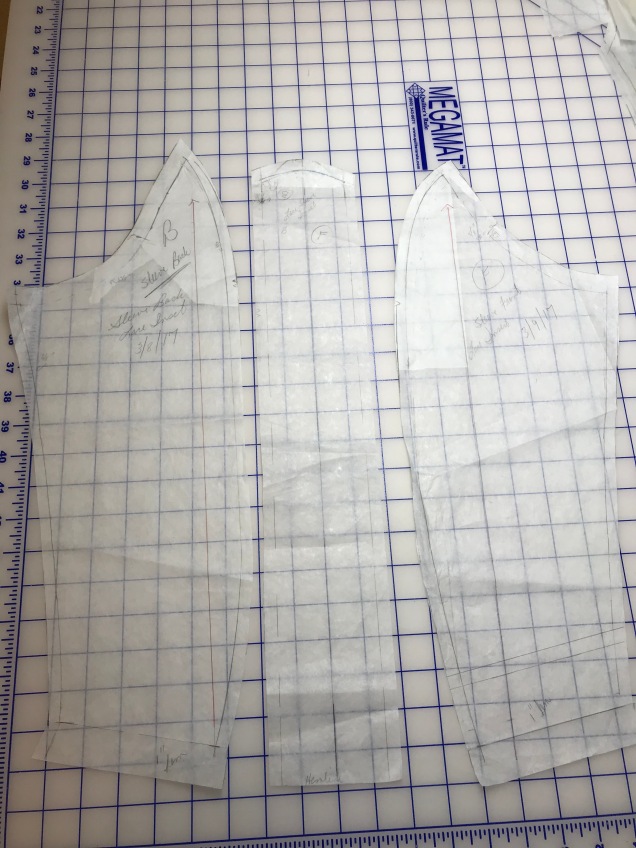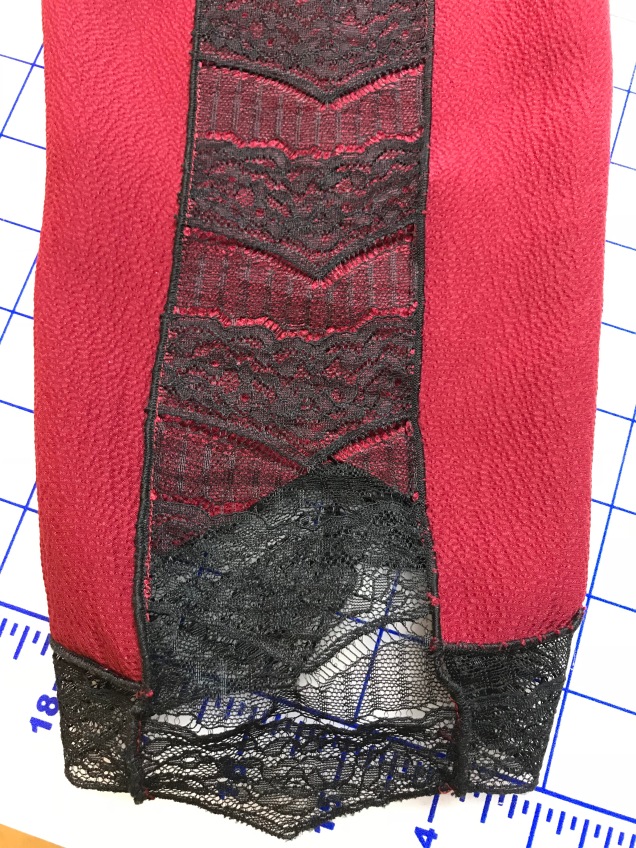I had planned to complete three new garments by early this month, a black wool skirt and two festive silk blouses to wear to an annual luncheon and brunch with two different sewing organizations. I finished the skirt in time for the luncheon and never started the second blouse. The first blouse, which has lace insets, is one I designed, made the pattern for and cut out months ago. It was completed in time to wear to a Christmas Eve brunch.
When I was preparing for a presentation on using lace in garments for my ASG neighborhood group, Sew Chicago, I decided to try out an idea for a lace inset sleeve that I had seen in a catalogue.

My original idea was to use fabric for the full length of the outer panels and just have the one panel of lace. This required converting my master sleeve pattern, which is two pieces, into a three-piece pattern. The conversion wasn’t quite as straightforward as I had anticipated, but I started the process and Sarah Veblen got me the rest of the way there.

Unfortunately, I ran into a problem when I was cutting the fabric. I wanted to use this nice hammered silk that I had originally planned to make into a sleeveless shell to wear under a suit jacket. It was the end of the bolt, but enough for that project. When I got the idea to use the silk on this project, I laid out my patten and had just enough to make the blouse according to my original design. But, when I refolded the fabric to cut out the very last pattern piece, the second outer panel of the sleeves, I didn’t realize that the fabric under the fold had a piece missing from it. Of course I didn’t discover the problem until after I cut out the pattern piece, and I didn’t have a large enough piece of fabric left to cut out a new panel. The solution I came up with was to cut the other panel pieces shorter than I had intended and fill in with lace going all the way around.
I used a narrow rolled hem on my serger to finish the seams attaching lace to lace and silk to lace.

I also wanted to have a little bit of lace set into the neckline.

I had it in my head that I could sandwich the lace in between the fashion fabric and the facing, attaching it the way a collar would be attached. I was wrong. It took me several failed attempts and a quick muslin mock-up to figure that out. In the end, I attached the lace to the facing by hand.
I was concerned about over-pressing the hammered silk, so just about all the pressing was done by hovering the iron over the fabric and using lots of steam.
I decided to hem by attaching ⅜” fusible web at the cut edge, pressing it up before removing the paper, then fusing it and folding it again for a total hem of ¾” with the raw edge concealed. After pinning the second fold in place, I steamed the hem by hovering the iron and using a press cloth, a process I repeated after sewing in the hem. The great thing about the texture of the fabric is that the pick stitches are almost undetectable.

This blouse is a joy to wear and a nice addition to my wardrobe.





















